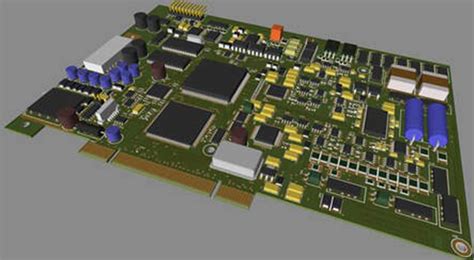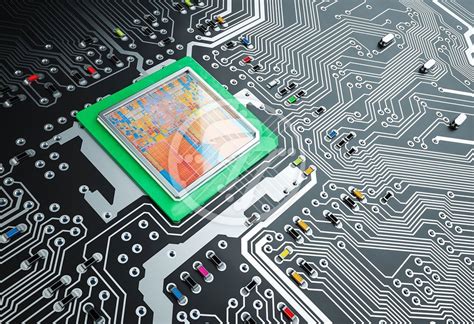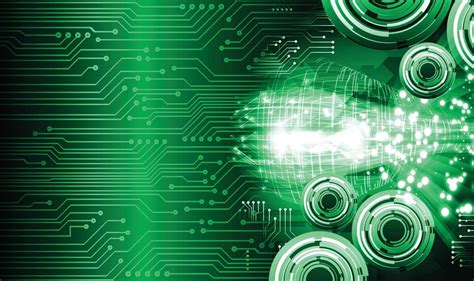Introduction to Multilayer PCBs and Their Significance in the Electronics Industry
Printed Circuit Boards (PCBs) have been the backbone of the electronics industry for decades. They provide a reliable and efficient way to connect electronic components and create complex circuits. As technology advances and the demand for smaller, more powerful devices increases, the need for more sophisticated PCBs has become evident. This is where multilayer PCBs come into play.
Multilayer PCBs are a type of PCB that consists of multiple layers of conductive material, typically copper, separated by insulating layers. These layers are interconnected through vias, which are small holes drilled through the board and plated with conductive material. The number of layers in a multilayer PCB can vary from four to over thirty, depending on the complexity of the circuit and the application requirements.
The use of multilayer PCBs has revolutionized the electronics industry by enabling the creation of more compact, high-performance devices. They offer several advantages over traditional single or double-layer PCBs, including:
- Increased circuit density
- Improved signal integrity
- Better power distribution
- Enhanced thermal management
- Reduced electromagnetic interference (EMI)
The Role of Multilayer PCBs in Various Industries
Consumer Electronics
The consumer electronics industry has been one of the primary drivers of the adoption of multilayer PCBs. As consumers demand smaller, more feature-rich devices, manufacturers have turned to multilayer PCBs to meet these requirements. Smartphones, tablets, laptops, and wearable devices all rely on multilayer PCBs to achieve their compact size and high performance.
For example, a modern smartphone may contain a multilayer PCB with over ten layers, allowing for the integration of various components such as the processor, memory, sensors, and wireless modules in a small form factor.
Automotive Electronics
The automotive industry has also embraced multilayer PCBs as vehicles become increasingly reliant on electronic systems. From infotainment systems and advanced driver assistance systems (ADAS) to electric vehicle power management, multilayer PCBs play a crucial role in enabling these technologies.
Multilayer PCBs in the automotive industry must meet stringent reliability and environmental requirements, as they are subjected to harsh conditions such as extreme temperatures, vibrations, and moisture. The use of high-quality materials and advanced manufacturing techniques ensures that these PCBs can withstand the demands of automotive applications.
Industrial and Medical Equipment
Industrial and medical equipment often require complex electronic systems to operate effectively. Multilayer PCBs have become essential in these applications due to their ability to handle high power requirements and maintain signal integrity in noisy environments.
In industrial settings, multilayer PCBs are used in control systems, power electronics, and communication equipment. They enable the creation of rugged, reliable devices that can withstand the harsh conditions found in factories and other industrial environments.
Medical devices, such as patient monitors, imaging equipment, and diagnostic tools, also rely on multilayer PCBs to ensure accurate and reliable operation. The use of biocompatible materials and strict manufacturing guidelines ensures that these PCBs meet the necessary safety and performance standards for medical applications.

Advancements in Multilayer PCB Technology
High-Density Interconnect (HDI) PCBs
High-Density Interconnect (HDI) PCBs are a type of multilayer PCB that offers even greater circuit density and performance. HDI PCBs use smaller vias, finer trace widths, and thinner dielectric layers to achieve higher component density and improved signal integrity.
The use of HDI technology has enabled the creation of even more compact and powerful devices, particularly in the consumer electronics and Wearable Technology sectors. HDI PCBs also offer the advantage of reduced layer count, which can lead to cost savings in certain applications.
Flexible and Rigid-Flex PCBs
Flexible and rigid-flex PCBs are another advancement in multilayer PCB technology that has gained traction in recent years. These PCBs combine the benefits of both rigid and flexible substrates, allowing for the creation of three-dimensional circuits that can conform to the shape of the device enclosure.
Flexible and rigid-flex PCBs are particularly useful in applications where space is limited, or where the device is subject to repeated flexing or bending. They are commonly used in wearable devices, medical implants, and aerospace applications.
Advanced Materials and Manufacturing Processes
The development of advanced materials and manufacturing processes has also contributed to the advancement of multilayer PCB technology. Some of these advancements include:
- Low-loss dielectric materials for improved signal integrity
- Embedded components for increased circuit density
- 3D printing for rapid prototyping and custom designs
- Automated optical inspection (AOI) for improved quality control
These advancements have enabled the creation of more complex, reliable, and cost-effective multilayer PCBs, further driving their adoption across various industries.

Challenges and Opportunities in Multilayer PCB Design and Manufacturing
Design Challenges
Designing multilayer PCBs presents several challenges that must be addressed to ensure optimal performance and reliability. Some of these challenges include:
-
Signal integrity: As circuit density increases and trace widths become smaller, maintaining signal integrity becomes more difficult. Designers must carefully consider factors such as impedance matching, crosstalk, and electromagnetic compatibility (EMC) to ensure reliable signal transmission.
-
Power distribution: Multilayer PCBs must provide adequate power distribution to all components while minimizing voltage drop and power loss. Designers must carefully plan the power and ground planes to ensure efficient and stable power delivery.
-
Thermal management: As component density increases, so does the amount of heat generated by the PCB. Designers must incorporate effective thermal management strategies, such as the use of thermal vias and heat spreaders, to prevent overheating and ensure reliable operation.
Manufacturing Challenges
Manufacturing multilayer PCBs also presents several challenges that must be addressed to ensure high yield and reliability. Some of these challenges include:
-
Registration and alignment: As the number of layers increases, ensuring precise alignment between layers becomes more difficult. Manufacturers must use advanced registration techniques, such as pin-in-paste and optical alignment, to ensure accurate layer stacking.
-
Drilling and plating: Drilling and plating vias become more challenging as the number of layers increases and via sizes decrease. Manufacturers must use high-precision drilling equipment and advanced plating processes to ensure reliable interconnections between layers.
-
Lamination: The lamination process, which involves bonding the layers together under heat and pressure, must be carefully controlled to ensure consistent dielectric thickness and prevent delamination or other defects.
Opportunities for Innovation
Despite these challenges, the future of multilayer PCBs presents numerous opportunities for innovation and growth. Some of these opportunities include:
-
5G and IoT: The rollout of 5G networks and the growth of the Internet of Things (IoT) will drive demand for more complex, high-performance multilayer PCBs. The increased bandwidth and low latency of 5G will enable new applications in areas such as autonomous vehicles, smart cities, and industrial automation.
-
Artificial Intelligence (AI) and Edge Computing: The growth of AI and edge computing will require the development of more powerful, energy-efficient multilayer PCBs. These PCBs will need to support high-performance processors, memory, and sensors while operating in space-constrained environments.
-
Sustainable and Eco-Friendly Materials: As environmental concerns continue to grow, there will be an increasing demand for sustainable and eco-friendly materials in multilayer PCB manufacturing. The development of biodegradable substrates, lead-free solders, and recyclable materials presents an opportunity for the industry to reduce its environmental impact.

FAQ
-
Q: What is the difference between a multilayer PCB and a single or double-layer PCB?
A: A multilayer PCB consists of three or more conductive layers, while a single or double-layer PCB has one or two conductive layers, respectively. Multilayer PCBs offer higher circuit density, improved signal integrity, and better power distribution compared to single or double-layer PCBs. -
Q: What industries commonly use multilayer PCBs?
A: Multilayer PCBs are used in a wide range of industries, including consumer electronics, automotive, industrial, medical, aerospace, and telecommunications. -
Q: What are some of the challenges in designing multilayer PCBs?
A: Some of the challenges in designing multilayer PCBs include maintaining signal integrity, ensuring proper power distribution, and managing thermal issues. Designers must carefully consider factors such as impedance matching, crosstalk, and electromagnetic compatibility to ensure reliable performance. -
Q: How do HDI PCBs differ from traditional multilayer PCBs?
A: HDI (High-Density Interconnect) PCBs are a type of multilayer PCB that offers even greater circuit density and performance. HDI PCBs use smaller vias, finer trace widths, and thinner dielectric layers to achieve higher component density and improved signal integrity compared to traditional multilayer PCBs. -
Q: What opportunities does the future of multilayer PCBs present?
A: The future of multilayer PCBs presents opportunities in areas such as 5G and IoT, artificial intelligence and edge computing, and the development of sustainable and eco-friendly materials. As technology continues to advance, the demand for more complex, high-performance multilayer PCBs will continue to grow.
Conclusion
Multilayer PCBs have become an essential component in the electronics industry, enabling the creation of smaller, more powerful devices across a wide range of applications. From consumer electronics and automotive systems to industrial equipment and medical devices, multilayer PCBs offer numerous advantages over traditional single or double-layer PCBs.
As technology continues to advance, the demand for more complex, high-performance multilayer PCBs will only continue to grow. Advancements in HDI technology, flexible and rigid-flex PCBs, and advanced materials and manufacturing processes will further drive the adoption of multilayer PCBs in the coming years.
However, designers and manufacturers must also address the challenges associated with multilayer PCBs, such as maintaining signal integrity, ensuring proper power distribution, and managing thermal issues. By carefully considering these factors and leveraging the latest design and manufacturing techniques, the industry can continue to push the boundaries of what is possible with multilayer PCBs.
Looking to the future, the growth of 5G, IoT, AI, and edge computing presents numerous opportunities for innovation in the multilayer PCB industry. The development of sustainable and eco-friendly materials also offers the potential to reduce the environmental impact of PCB manufacturing.
As the electronics industry continues to evolve, multilayer PCBs will undoubtedly play a crucial role in shaping the future of technology. By embracing the challenges and opportunities presented by multilayer PCBs, designers and manufacturers can create innovative, high-performance devices that meet the ever-growing demands of the market.

No responses yet